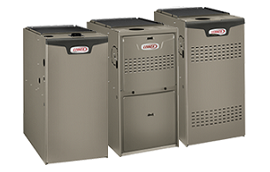When the weather starts to get colder, our attention turns to our heating equipment for the months ahead. This is the time when many people realize that their old heater isn’t up to the task ahead and then search for a newer model. This can be a mad scramble as you need a new heater now before the weather gets any colder. Although this is a time sensitive issue, some care needs to be taken to ensure that your new heater will be the correct size for your home. The size is the power output of the heater, and it needs to be carefully matched to suit your specific home. Let’s take a closer look at why this is important and how to size your new heater before making a purchase.
Why the Heater Size Matters:
A heater can be too small to suit your home, and it can also be too large. This may seem strange at first, but both of these situations can bring with them different problems.
The Heater is Too Small: If you buy an underpowered heater it will struggle to adequately heat your home, and you may feel cold through the winter months. The heater will need to be constantly run to extract any heating performance, and as a result, the energy bills will be higher. Running the equipment constantly will also put the heater under unnecessary strain and cause the unit to fail prematurely.
The Heater is Too Large: When the heater is overpowered for the home, it can cause other problems. The heater may turn off and on too quickly; this will drain more power than necessary to run efficiently. This process is known as short cycling, and it can have a detrimental effect on your heater. This can also cause component failure and lower the lifespan of the equipment.
As you can see, a heater can be too small or too large, and both situations are not ideal for heating your home. Energy bills may be higher, heating will be less effective, and equipment could be prone to premature failure. When you choose a heater, make sure that the heater isn’t overpowered or underpowered for your home.
How to Size Your New Heater Correctly:
To properly size a new heater, it’s essential to carry out an audit on your home. This will include the square footage of your home and take into account a variety of other factors. As an example, most homes will typically have different heating needs in the laundry room and kitchen where more heat is generated from washing and cooking. Another key factor is the level of insulation in the walls and the amount of exposure to sunlight in various parts of the home. This is a task that should be carried out by a trained and licensed technician that has experience in sizing heaters. They will be able to accurately determine the correct size of heater to efficiently heat your home and make some specific equipment recommendations.
